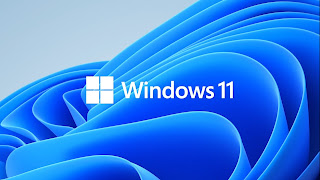Windows 11 is now available for download on eligible PCs and Microsoft is aiming to offer Windows 11 to all eligible Windows 10 devices by the middle of 2022 that have at least a 64-bit processor or SoC with 1GHz or faster with two cores or more and 4GB RAM. The update is free for existing Windows 10 users on compatible devices. Windows 10 will remain available with support through 2025.
Image credit: Microsoft
How to upgrade from Windows 10 to Windows 11
Windows 11 is a major version of the Windows NT operating system developed by Microsoft that was announced on June 24, 2021. It is available in 110 languages. Microsoft on October 5, 2021 announced that Windows 11 is now released as a free upgrade via Windows Update for eligible devices running Windows 10. Microsoft is gradually rolling out Windows 11, so the free upgrade won’t be offered to all existing devices that are officially supported just yet. According to Microsoft, all existing and eligible devices should be offered the Windows 11 upgrade by mid-2022. John Cable in a Windows Blogs writes " We will begin to offer the upgrade to eligible new devices first. Then, as with previous rollouts, we will study device health data and other signals to determine the pace at which Windows 11 is offered via Windows Update."
Minimum system requirements for windows 11
Let us first check the minimum system requirements to see if your device meets those requirements and what to do if it doesn't. These are the minimum system requirements for installing Windows 11 on a PC. If your device is already running Windows 10, you can use the PC Health Check app to assess compatibility. Devices must be running Windows 10, version 2004 or later, to upgrade. Free updates are available through Windows Update in Settings>Update and Security.
Processor: 1 gigahertz (GHz) or faster with 2 or more cores on a compatible 64-bit processor or System on a Chip (SoC)
RAM: 4 GB
Storage: 64 GB or larger storage
System firmware: UEFI, Secure Boot capable
Trusted platform module (TPM): TPM version 2.0.
Graphics card: Compatible with DirectX 12 or later with WDDM 2.0 driver.
Display: High definition (720p) display that is greater than 9” diagonally, 8 bits per color channel
Internet connection and Microsoft account: Windows 11 Home edition requires internet connectivity and a Microsoft account. Switching a device out of Windows 11 Home in S mode also requires internet connectivity. For all Windows 11 editions, internet access is required to perform updates and to download and take advantage of some features. A Microsoft account is also required for some features.
This method is recommended by Microsoft. If your device meets the Windows 11 support requirements, you can check whether the Windows 11 update has been made available for your PC or not.
To check if Windows 11 is ready for your device, select Start > Settings > Update & Security > Windows Update > Check for updates.
Go to Start and click on Settings.
Then click on the Update and Security option.
Click on Check for Updates under the Windows update section.
This assistant is for those who want to Upgrade a Windows 10 PC to Windows 11. According to Microsoft your Device must have Windows 10, version 2004 or higher installed and must meet the Windows 11 device specifications for upgrade requirements and supported features to run Installation Assistant.
After downloading the Installation Assistant follow these steps:
Select Run. You'll need to be an administrator to run this tool.
After the tool has confirmed the device hardware is compatible, you will be presented with the licence terms. Select Accept and Install.
When the tool is ready, click the Restart Now button to complete the installation on your computer.
It may take some time to install Windows 11, and your PC will restart a few times. Make sure that you don’t turn off your PC.



